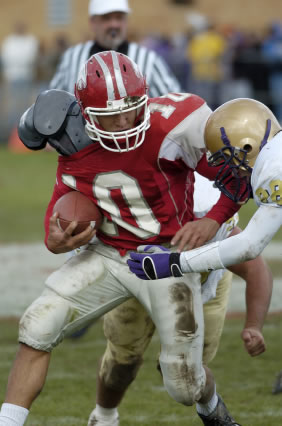
Image: iStockphoto
Be careful not to rely on what adolescent athletes tell you about their recovery from concussions as the sole criterion for making return-to-play decisions, researchers from UPMC and the University of Pittsburgh warn sports medicine practitioners.
In findings published online in the inaugural issue of Applied Neuropsychology: Child, researchers found that young athletes neglect the more subtle symptoms — neuropsychiatric and sleep issues — and base their perceptions of their recovery primarily on physical (somatic) symptoms such as headache and nausea.
Results indicate that when athletes gauge their own readiness to return-to-play, their physical symptoms account for 56 percent of their self-assessment, whereas their performance on objective neurocognitive testing only accounts for 28 percent. While the statistical analyses revealed that they judged their recovery on somatic and cognitive symptoms almost twice as strongly as neurocognitive testing, the sleep and neuropsychiatric symptoms ranked ahead of their performance on the objective test data by only a few percentage points.
“Our findings suggest that young athletes may not perceive their cognitive deficits as well as they perceive their somatic symptoms,” said Anthony Kontos, Ph.D., assistant research director with the UPMC Center for Sports Medicine Concussion Program. “Therefore, it is important to assess their cognitive deficits using neurocognitive concussion tests and a comprehensive clinical evaluation.”
“These research results affirm what we see daily in our clinical experience,” said Michael “Micky” Collins, Ph.D., the Concussion Program’s executive and clinical director. “Athletes have a hard time understanding the cryptic nature of this injury, and relying only on self-assessment of symptoms is dangerous and naïve when it comes to allowing athletes back to play after a brain injury. Objective assessment through the use of computerized neurocognitive testing and a thorough evaluation are critical components of concussion management and return-to-play considerations.”
The research team studied 101 concussed athletes (62 males, 39 females) ages 12 to 18, who were evaluated by clinicians at the UPMC Center for Sports Medicine Concussion Program. They asked athletes to rate their “percent back to normal.” They compared those numbers against the ImPACT (Immediate Post-Concussion Assessment and Cognitive Testing) battery and somatic, cognitive, sleep and neuropsychiatric symptom clusters to find significant correlations. In short, the athletes’ judgment was based on a small subset of the factors evaluated in concussion care.
Males in the study tended to feel more “recovered” from their concussions than females, suggesting females may experience more severe post-concussion symptoms than males, or males under-report their symptoms. Such gender differences merit more study, researchers concluded.
In addition to Drs. Kontos and Collins, the research team consisted of lead author Natalie Sandel, B.S., of the Department of Neuroscience, Pitt’s Dietrich School of Arts and Sciences; Mark Lovell, Ph.D., then with the Pitt Department of Orthopaedic Surgery; and Nathan Kegel, Ph.D., of the Concussion Program.
